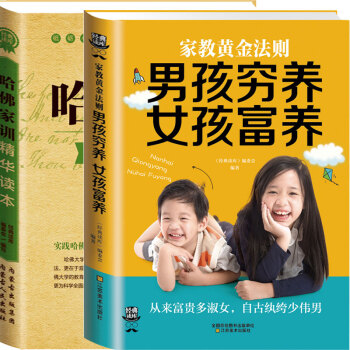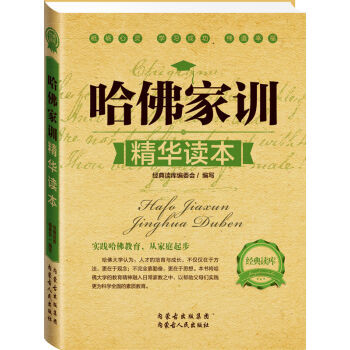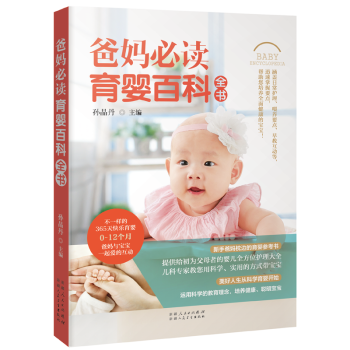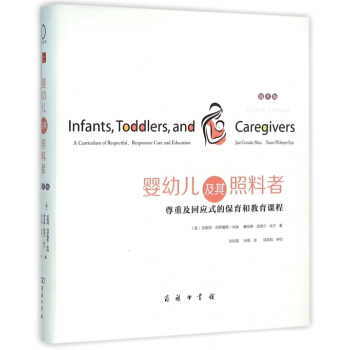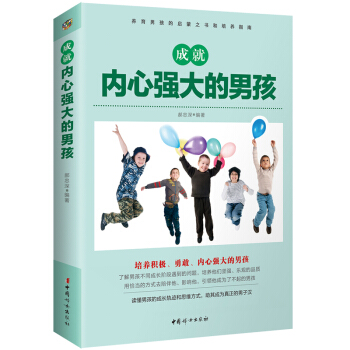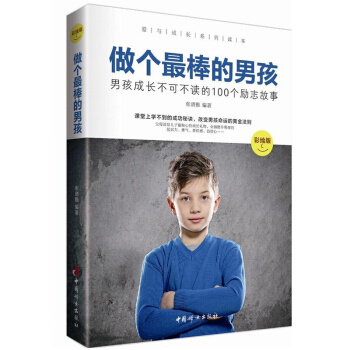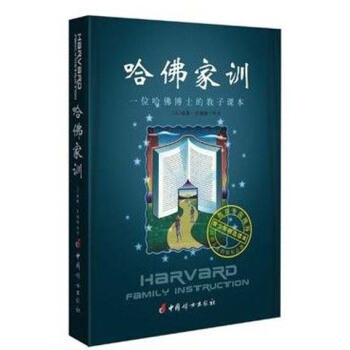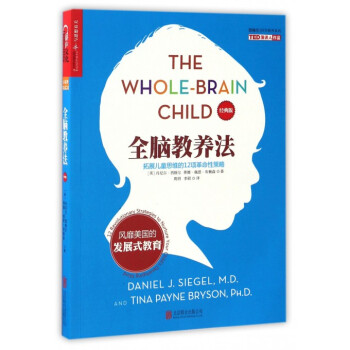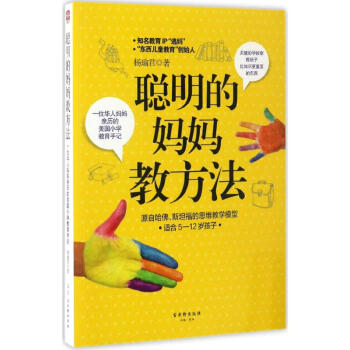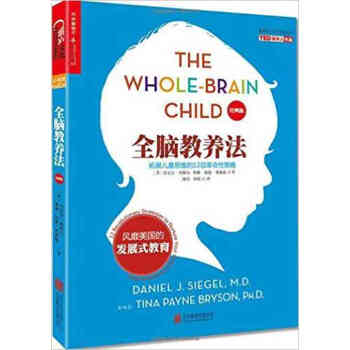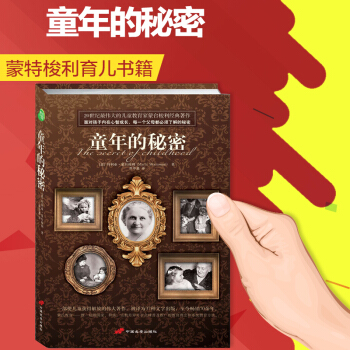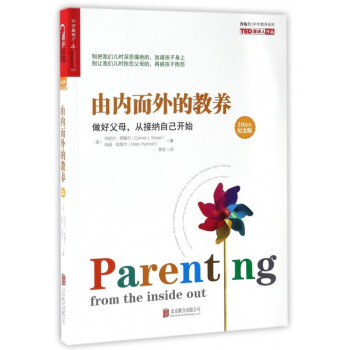具体描述
基本信息
书名:哈佛家训精华读本+家教黄金法则男孩穷养女孩富养
:59.60元
作者:《经典读库》编委会
出版社:内蒙古人民出版社 江苏美术出版社
ISBN:9787204123964 9787534467936
编辑推荐
对于大多数父母来说,给孩子“面包”不是问题。他们会想方设法满足孩子对物质的需要。然而,一谈到孩子的成长,孩子所需的精神食粮,大多数人则往往惶惶不安。即使有些家长通过一些途径掌握到一些家教的心得,但也容易感到远远不足,生怕顾此失彼,对孩子的成长指导造成偏差。
哈佛大学在素质教育方面指出:人才的培育与成长,不仅仅在于方法,更在于观念;不完全靠勤奋,而更在于思想。他们认为,当人的思维被一种智慧的思想主导时,就会让人释放出巨大的潜能,从而让人获得驾驭命运的力量。人的一生会顺着怎样的轨迹运行,完全在于人们对这种力量掌控的强弱。如果说,人生是受自己的意识指导来验证自我实践的一个过程,那么在这个过程中注入哈佛大学所倡导的一些精神理念和人生哲理,显然会帮助人们走出一个更加完美的人生。
目录
《哈佛家训精华读本》
拥抱梦想,向美好的明天前进
史密斯的诉讼
石头堆积的城堡
如果你愿意飞翔
你想成为什么
长大后的愿望
拿破仑的希望之星
一生的志愿
伟大的骑师
富勒和他的爸爸
小狗的训练
上帝的回信
海市蜃楼
预见未知的自己
不为廉价的东西祈祷男女有“别”,谁还在盲目教育
《家教黄金法则男孩穷养女孩富养》
男孩女孩大不同
奇妙的染色体
让男孩调皮捣蛋的睾丸素
让女孩温柔敏感的雌性激素
男孩女孩大脑发育的区别
男孩的天赋和弱势
女孩的天赋和弱势
男孩的成长轨迹
女孩的成长轨迹
男孩女孩身处的世界
性别暗示无处不在
争议中的“男孩危机”
女性面对的所谓“平等”
男性承受的性别压力
《 parent-child connection: Guiding growth with wisdom and love》 In the intricate tapestry of modern parenthood, a delicate balance is sought between nurturing independence and providing unwavering support. The journey of raising children is a profound and transformative experience, one that requires not only love and dedication but also a deep understanding of their evolving needs and the ever-changing world around them. This collection, "Parent-Child Connection: Guiding Growth with Wisdom and Love," delves into the multifaceted aspects of effective parenting, offering timeless wisdom and practical strategies to foster resilient, capable, and well-adjusted individuals. Part 1: Cultivating Character – The Foundation of a Meaningful Life The first part of this insightful collection focuses on the bedrock of childhood development: character building. It explores how parents can instill core values, ethical principles, and a strong sense of self-worth in their children from an early age. Nurturing Independence and Resilience: This section emphasizes the importance of allowing children to experience age-appropriate challenges and to develop problem-solving skills independently. It discusses how to foster a sense of self-reliance, teaching children to navigate setbacks, learn from mistakes, and build the mental fortitude to overcome obstacles. The aim is not to shield children from hardship, but to equip them with the tools and confidence to face it. This includes strategies for encouraging initiative, supporting their decision-making processes (within safe boundaries), and celebrating their efforts and successes, no matter how small. Instilling Values and Ethical Understanding: A core component of character development is the transmission of moral compass. This part explores how parents can effectively impart values such as honesty, integrity, empathy, respect, and responsibility. It delves into the power of role-modeling, where children learn by observing their parents' actions and interactions. Discussion also covers how to engage children in conversations about ethical dilemmas, helping them understand the consequences of their choices and to develop a personal sense of right and wrong. This section highlights the importance of creating an environment where open dialogue about feelings and moral issues is encouraged. Fostering Emotional Intelligence and Self-Awareness: Understanding and managing emotions is crucial for healthy relationships and overall well-being. This part examines how parents can help children identify, express, and regulate their emotions in constructive ways. It provides guidance on teaching empathy, helping children recognize and understand the feelings of others, and fostering compassion. Strategies for building self-awareness, enabling children to understand their own strengths, weaknesses, and emotional triggers, are also explored, empowering them to develop healthy coping mechanisms. The Role of Discipline and Guidance: Discipline, when approached with understanding and consistency, becomes a powerful tool for learning. This section distinguishes between punitive measures and constructive guidance. It advocates for a positive approach to discipline that focuses on teaching and guiding rather than punishing. Parents will find practical advice on setting clear expectations, establishing consistent boundaries, and implementing age-appropriate consequences that help children learn from their behavior. The emphasis is on fostering self-control and an understanding of rules and their purpose. Part 2: Nurturing the Mind – Igniting a Lifelong Love of Learning Beyond character, a child's intellectual development is paramount. This section delves into strategies for cultivating curiosity, critical thinking, and a genuine passion for learning. Encouraging Curiosity and Exploration: Children are naturally inquisitive. This part explores how parents can nurture this innate curiosity by providing opportunities for exploration, discovery, and hands-on learning. It discusses the importance of encouraging questions, engaging in meaningful conversations, and supporting their interests, even if they differ from parental expectations. The aim is to foster a mindset of lifelong learning, where education is seen not as a chore, but as an exciting adventure. Developing Critical Thinking and Problem-Solving Skills: In an increasingly complex world, the ability to think critically and solve problems is essential. This section offers practical techniques for parents to help children develop these skills. This includes encouraging them to question assumptions, analyze information from different perspectives, and engage in logical reasoning. Parents will learn how to present challenges in ways that promote critical thinking and how to guide their children through the process of finding solutions. The Power of Reading and Storytelling: Reading is a cornerstone of intellectual development. This part highlights the profound impact of literature on a child's imagination, vocabulary, and comprehension. It provides guidance on fostering a love of reading from an early age, suggesting strategies for engaging storytelling, creating a rich reading environment, and making reading a shared and enjoyable experience. The discussion also extends to the benefits of encouraging creative writing and imaginative play. Balancing Screen Time and Real-World Experiences: In the digital age, finding a healthy balance between online and offline activities is crucial. This section addresses the challenges of managing screen time and emphasizes the importance of prioritizing real-world experiences, physical activity, and face-to-face interactions. It offers strategies for setting appropriate limits on digital consumption and for ensuring that technology is used as a tool for learning and connection, rather than a substitute for genuine engagement. Part 3: Fostering Healthy Relationships – The Cornerstone of Well-being A child’s social and emotional development is intrinsically linked to their ability to form and maintain healthy relationships. This part explores how parents can guide their children in building strong connections. Building Strong Parent-Child Bonds: The parent-child relationship is the foundation upon which all other relationships are built. This section focuses on the importance of creating a secure, loving, and communicative parent-child bond. It provides practical advice on active listening, empathetic responses, and dedicating quality time to connect with children on a deeper level. This includes understanding their evolving communication styles and adapting parenting approaches as they grow. Teaching Social Skills and Healthy Interactions: Navigating the social world can be challenging for children. This part offers guidance on teaching essential social skills such as sharing, cooperation, communication, conflict resolution, and forming friendships. It explores how to help children understand social cues, develop empathy, and build positive relationships with their peers. The focus is on equipping them with the confidence and skills to interact positively and respectfully with others. Navigating Peer Relationships and Bullying: The complexities of peer relationships require parental guidance. This section discusses how to help children understand the dynamics of friendships, manage peer pressure, and develop healthy boundaries. It also addresses the sensitive issue of bullying, offering strategies for parents to recognize the signs, support victims, and address the behavior of bullies with empathy and understanding. The aim is to empower children to stand up for themselves and others, fostering a sense of justice and compassion. Encouraging Open Communication and Trust: A foundation of trust and open communication is vital for a healthy parent-child relationship. This section explores how to create an environment where children feel safe to express their thoughts, feelings, and concerns without fear of judgment. It provides techniques for active listening, asking open-ended questions, and responding to their confidences with sensitivity and respect. This fosters a strong, enduring connection built on mutual understanding and trust. Part 4: Navigating the Modern World – Preparing for the Future As children mature, parents must also equip them with the skills and understanding to navigate an increasingly complex and rapidly changing world. Promoting Financial Literacy and Responsibility: Financial education is an essential life skill. This part delves into how parents can introduce children to concepts of saving, spending, budgeting, and the value of money in age-appropriate ways. It aims to foster a sense of financial responsibility and to equip them with the knowledge to make informed financial decisions as they grow into adulthood. Developing Digital Citizenship and Online Safety: In the digital age, understanding responsible online behavior is paramount. This section addresses the importance of teaching children about online safety, privacy, digital etiquette, and the potential risks associated with internet use. It encourages parents to engage in open conversations about their children's online activities and to foster a sense of critical awareness regarding digital content. Fostering a Growth Mindset and Adaptability: The ability to embrace challenges, persevere through setbacks, and adapt to new situations is crucial for success. This part explores the concept of a growth mindset, encouraging children to view their abilities as malleable and to embrace learning from mistakes. Strategies for fostering resilience, optimism, and a proactive approach to challenges are discussed, preparing them for the uncertainties of the future. Encouraging Passions and Aspirations: Helping children discover and pursue their passions is key to their fulfillment. This section emphasizes the importance of supporting their interests, encouraging exploration of different activities, and helping them identify their strengths and aspirations. The goal is to foster a sense of purpose and to empower them to pursue paths that bring them joy and meaning. This comprehensive collection, "Parent-Child Connection: Guiding Growth with Wisdom and Love," offers a roadmap for parents seeking to nurture their children into well-rounded, confident, and capable individuals. It emphasizes that the journey of parenting is one of continuous learning and adaptation, and by embracing wisdom and love, parents can forge strong, lasting connections that will guide their children throughout their lives.
